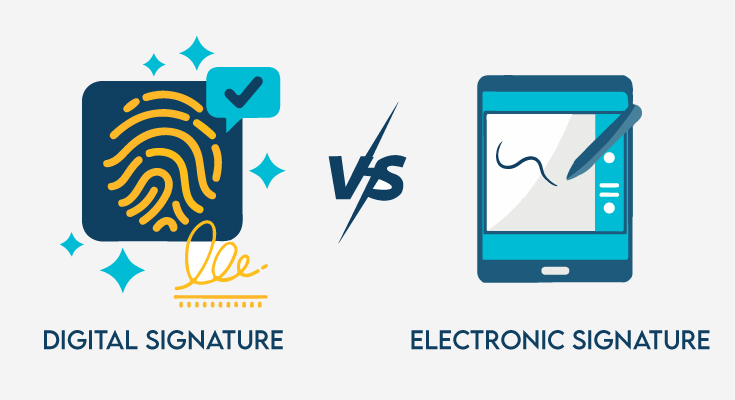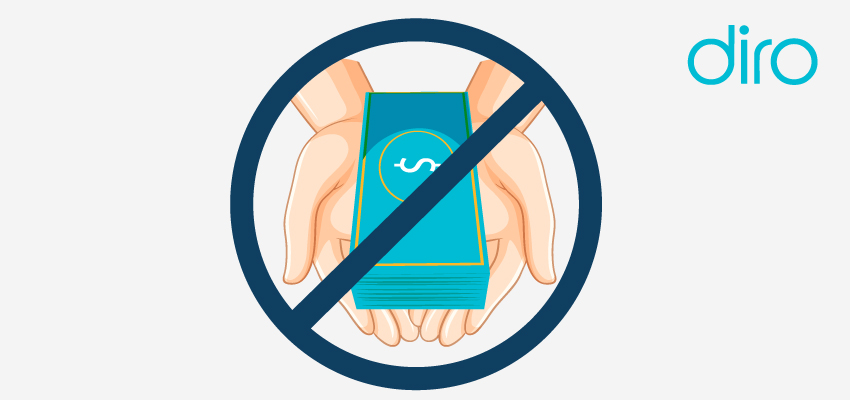Electronic Signatures and Digital Signatures: All You Need to Know

Individuals and businesses use the terms electronic signature and digital signature interchangeably, and there are some key differences and specific reasons for why you may have to choose one over another. In this guide, we aim to clarify the difference between electronic and digital signatures. You’ll also learn which type of signature should determine the document signing workflow.
What Is an Electronic Signature?
According to the US Federal ESIGN Act, electronic signatures are:
“Electronic sound, symbol or process, attached to or logically associated with a contact or other record and executed or adopted by a person with the intent to sign the record.”
To put it in simple words, e-signatures are used to refer to any signature that is added electronically as opposed to a physical paper document. Electronic signatures are most commonly used to verify the content of a document, however not all electronic signatures offer assurance to law and order. If your business operates in an industry that’s highly regulated while dealing with personal or customer information, then using a more secure option is the key.
What is a Digital Signature?
Digital signatures are a type of electronic signature and both of them are used to sign a document. There are some key factors that make both of them unique from each other.
Paper-based documents and workflows are full of security concerns. The most common concerns customers and businesses face while dealing with paper-based documents are:
- Is the person who provided the document real? How can businesses verify if the signature is valid and hasn’t been forged?
- How can businesses safeguard that the content within the document hasn’t been tampered with?
Notaries came into existence to help businesses to support those concerns. Notaries of today play a vital role in ensuring that the parties of a transaction that the document is authentic and can be trusted.
However, the same problem exists in electronic document workflows. Digital signatures were developed to help to solve this problem. They are essentially the digital equivalent of adding a notarized signature to your paperwork. In the case of digital signatures, a third party known as the Certificate Authority (CA) is responsible for verifying customer identity.
Certificate Authorities tie your identity to a PKI-Based digital certificate that allows the users to use their certificate to create digital signatures locally using a token or remote using any of the cloud-based signing platforms.
When you add a digital signature to a document, cryptography ties your digital certificate with the data being signed into a unique digital fingerprint. This is what makes the digital signature secure and compliant, thus making it more secure and powerful for law enforcement agencies. To summarize, a carefully thought-out and secure cryptographic operation allows digital signatures to assure:
- The document is authentic and comes from a verified source
- Identities have been verified by a certified authority
- The document is authentic and hasn’t been tampered with
What Types of Signatures are Legally Binding?
The majority of the regulatory bodies now demand digital signatures over electronic signatures because digital signature provides authenticity and integrity. Deciding what type of signature you want to implement should be dictated by the type of documents you need to sign. These are the type of digital signatures that are binding:
- US ESIGN
- FDA CFR 21 Part 11
- US UETA
- US State Professional Engineering Seals
- UN Model Electronic Signature Law
- Sarbanes-Oxley (SOX)
- eIDAS
- CNCA
Which Document Signing Platforms Support Digital Signatures?
Fortunately, most of the document signing and workflow platforms enable users to apply secure digital signatures. Here is a list of platforms that support digital signatures:
- DocuSign: Supports digital signatures and electronic seals by integration with GlobalSign
- Adobe Sign: Two types of digital signatures, certified and approved.
- Microsoft Word: Microsoft also supports two types of digital signatures using a token certificate visible and non-visible.












